Small Space Cucumber Growing can feel like a pipe dream, especially if you’re living in an apartment or have a tiny backyard. But guess what? It’s totally achievable! Forget sprawling vines taking over your garden; I’m here to show you some clever DIY tricks and hacks to enjoy fresh, crisp cucumbers, no matter how limited your space is.
Cucumbers have a rich history, dating back over 3,000 years to India, where they were first cultivated. They’ve since spread across the globe, becoming a staple in cuisines worldwide. But traditionally, growing them required a significant amount of land. That’s where these DIY solutions come in!
Let’s face it, store-bought cucumbers can be bland and often lack that fresh, vibrant flavor. Plus, knowing exactly where your food comes from is incredibly satisfying. With these Small Space Cucumber Growing techniques, you can bypass the grocery store and harvest your own delicious cucumbers right from your balcony, patio, or even a sunny windowsill. I’ll guide you through choosing the right varieties, building space-saving structures, and mastering essential care tips. Get ready to transform your small space into a cucumber haven!
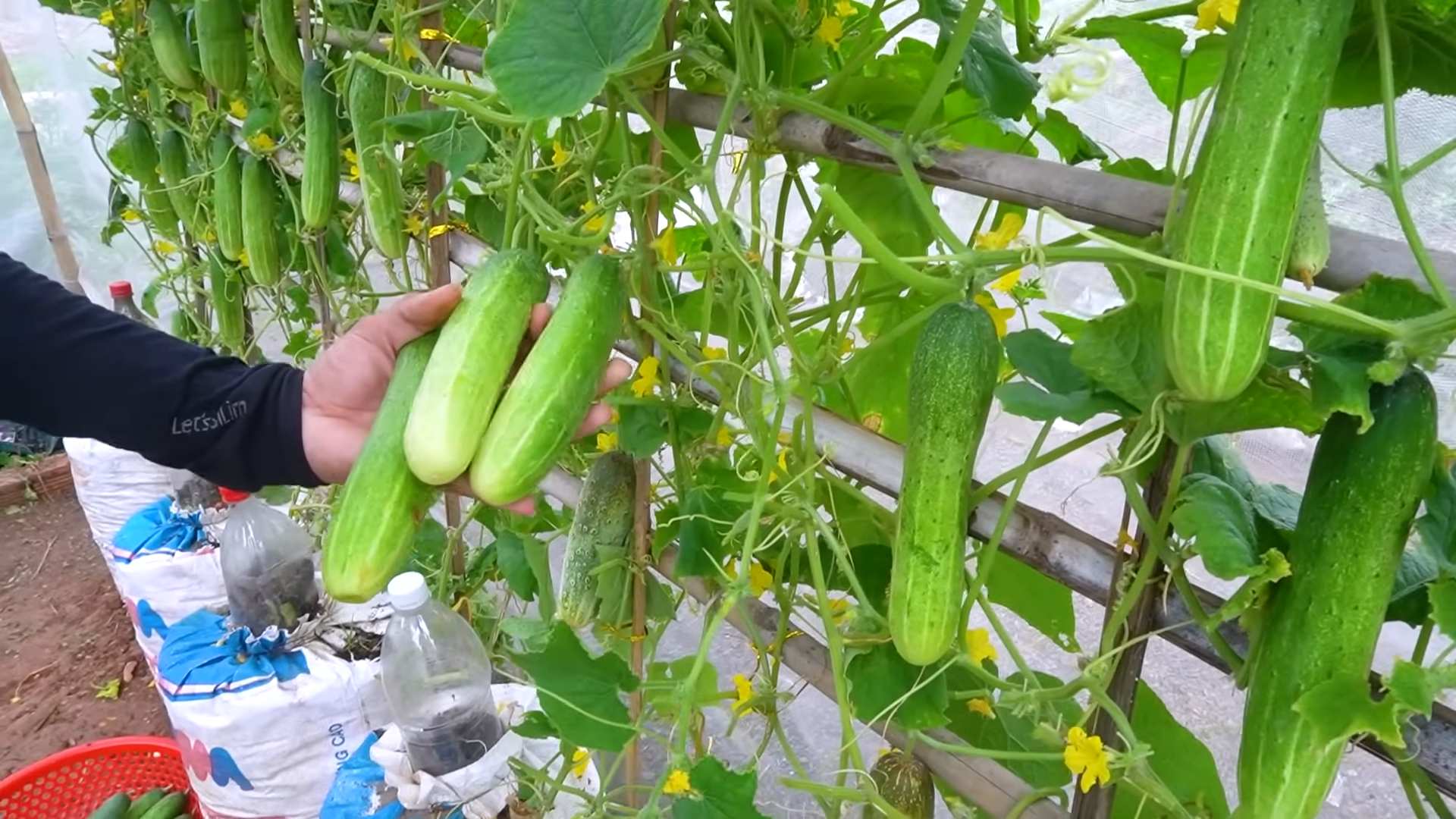
Growing Cucumbers in Small Spaces: A DIY Guide
Hey there, fellow gardening enthusiasts! Ever dreamed of fresh, crisp cucumbers straight from your own garden, but thought you didn’t have the space? Well, I’m here to tell you that you absolutely can! Growing cucumbers in small spaces is totally achievable with a few clever techniques. I’ve been doing it for years, and I’m excited to share my secrets with you. Let’s dive in!
Choosing the Right Cucumber Variety
First things first, not all cucumbers are created equal when it comes to small-space gardening. We need to pick varieties that are compact and well-suited for container growing.
* Bush Varieties: These are your best friend! Bush cucumbers are bred to be more compact and less sprawling than their vining counterparts. They’re perfect for pots and containers. Some of my favorites include:
* Spacemaster: As the name suggests, this one is a space saver! It produces delicious, dark green cucumbers.
* Bush Champion: Another great option for containers, yielding a good harvest of standard-sized cucumbers.
* Patio Snacker: Ideal for snacking, these cucumbers are small and sweet.
* Vining Varieties (with Support): If you’re set on growing a vining variety, don’t despair! You can still make it work with proper support. Look for varieties that are relatively compact and manageable. Consider these:
* Diva: A popular choice for its disease resistance and delicious, burpless cucumbers.
* Little Leaf: This variety produces smaller leaves, making it a bit more compact than other vining types.
* Lemon Cucumber: These are round, yellow, and have a mild flavor. They need support but are relatively easy to manage.
Setting Up Your Cucumber Container
Now that we’ve chosen our cucumber variety, let’s get our container ready. This is a crucial step for success!
* Container Size: Cucumbers need room for their roots to grow. I recommend a container that’s at least 12 inches in diameter and 12 inches deep. Bigger is generally better, so if you have the space, go for a 5-gallon bucket or larger.
* Drainage: Excellent drainage is essential. Cucumbers don’t like soggy roots. Make sure your container has plenty of drainage holes. If not, drill some!
* Potting Mix: Use a high-quality potting mix that’s well-draining and rich in nutrients. Avoid using garden soil, as it can compact in containers and hinder drainage. I like to mix compost into my potting mix for an extra boost of nutrients.
* Location: Cucumbers need at least 6-8 hours of sunlight per day. Choose a sunny spot for your container. A south-facing balcony or patio is ideal.
Planting Your Cucumber Seedlings
Alright, time to get our hands dirty!
1. Fill the Container: Fill your container with potting mix, leaving about an inch or two of space at the top.
2. Planting Depth: Dig a small hole about 1 inch deep.
3. Sowing Seeds or Transplanting Seedlings: If you’re starting from seeds, plant 2-3 seeds in each hole. If you’re using seedlings, gently remove them from their nursery pots and place them in the hole.
4. Cover and Water: Cover the seeds or seedlings with soil and gently water the container until the soil is moist but not soggy.
5. Thinning (if necessary): If you planted multiple seeds, once the seedlings emerge, thin them out to the strongest one per container.
Providing Support (for Vining Varieties)
If you’re growing a vining cucumber variety, you’ll need to provide support for the vines to climb. This is essential for keeping the plants healthy and productive.
* Types of Support: There are several options for supporting cucumber vines:
* Trellis: A trellis is a classic choice. You can buy a pre-made trellis or build your own using wood or metal.
* Tomato Cage: A sturdy tomato cage can also work well, especially for smaller vining varieties.
* Netting: You can use netting stretched between two posts or attached to a wall.
* DIY Structures: Get creative! You can use bamboo stakes, branches, or even old ladders to create a unique support structure.
* Installing the Support: Place the support structure in the container before or shortly after planting the seedlings. Make sure it’s sturdy and won’t topple over when the vines get heavy.
* Training the Vines: As the cucumber vines grow, gently guide them onto the support structure. You may need to tie them loosely with twine or plant clips.
Caring for Your Cucumber Plants
Now comes the ongoing care to keep your cucumber plants thriving.
* Watering: Cucumbers need consistent moisture, especially during hot weather. Water deeply whenever the top inch of soil feels dry to the touch. Avoid overhead watering, as this can lead to fungal diseases. I prefer to water at the base of the plant.
* Fertilizing: Cucumbers are heavy feeders. Fertilize them every 2-3 weeks with a balanced fertilizer or a fertilizer specifically formulated for vegetables. You can also use compost tea or fish emulsion.
* Mulching: Apply a layer of mulch around the base of the plants to help retain moisture, suppress weeds, and regulate soil temperature. Straw, wood chips, or shredded leaves work well.
* Pruning: Pruning can help improve air circulation and encourage fruit production. Remove any yellowing or dead leaves. For vining varieties, you can also prune side shoots to encourage the main vine to grow.
* Pest and Disease Control: Keep an eye out for common cucumber pests like aphids, cucumber beetles, and squash bugs. You can control these pests with insecticidal soap, neem oil, or by handpicking them off the plants. Prevent fungal diseases by providing good air circulation and avoiding overhead watering.
Pollination: Helping Your Cucumbers Produce Fruit
Cucumbers need to be pollinated in order to produce fruit. Some cucumber varieties are parthenocarpic, meaning they don’t require pollination to set fruit. However, most varieties need either bees or hand-pollination.
* Attracting Pollinators: Plant flowers near your cucumbers to attract bees and other pollinators. Some good choices include sunflowers, zinnias, and lavender.
* Hand-Pollination: If you’re not seeing many bees, you can hand-pollinate your cucumbers. This is a simple process:
1. Identify Male and Female Flowers: Male flowers have a long, thin stem, while female flowers have a small cucumber-like structure behind the flower.
2. Transfer Pollen: Use a small paintbrush or cotton swab to collect pollen from the male flower.
3. Apply Pollen to Female Flower: Gently brush the pollen onto the stigma (the sticky part) of the female flower.
4. Repeat: Repeat this process for all the female flowers that are open.
Harvesting Your Cucumbers
The moment we’ve all been waiting for!
* Harvest Time: Cucumbers are usually ready to harvest about 50-70 days after planting. Check the seed packet or plant tag for specific harvesting instructions for your variety.
* Signs of Ripeness: Cucumbers are typically harvested when they are firm, green, and have reached the desired size. Overripe cucumbers can become yellow, seedy, and bitter.
* Harvesting Technique: Use a sharp knife or pruning shears to cut the cucumber from the vine, leaving a small stem attached.
* Enjoy! Wash your freshly harvested cucumbers and enjoy them in salads, sandwiches, or as a refreshing snack.
Troubleshooting Common Cucumber Problems
Even with the best care, you might encounter some problems along the way. Here are a few common issues and how to address them:
* Yellowing Leaves: This can be caused by overwatering, underwatering, nutrient deficiencies, or pests. Check the soil moisture, fertilize if necessary, and inspect the plants for pests.
* Blossom End Rot: This is a condition where the blossom end of the cucumber turns brown and mushy. It’s usually caused by calcium deficiency or inconsistent watering. Ensure consistent watering and add calcium to the soil.
* Powdery Mildew: This is a fungal disease that causes a white, powdery coating on the leaves. Improve air circulation, avoid overhead watering, and treat with a fungicide if necessary.
* Lack of Fruit: This can be caused by poor pollination, nutrient deficiencies, or stress. Attract pollinators, fertilize regularly, and provide consistent watering.
Vertical Gardening for Even Smaller Spaces
If you’re really tight on space, consider vertical gardening techniques.
* Hanging Baskets: Bush cucumber varieties can thrive
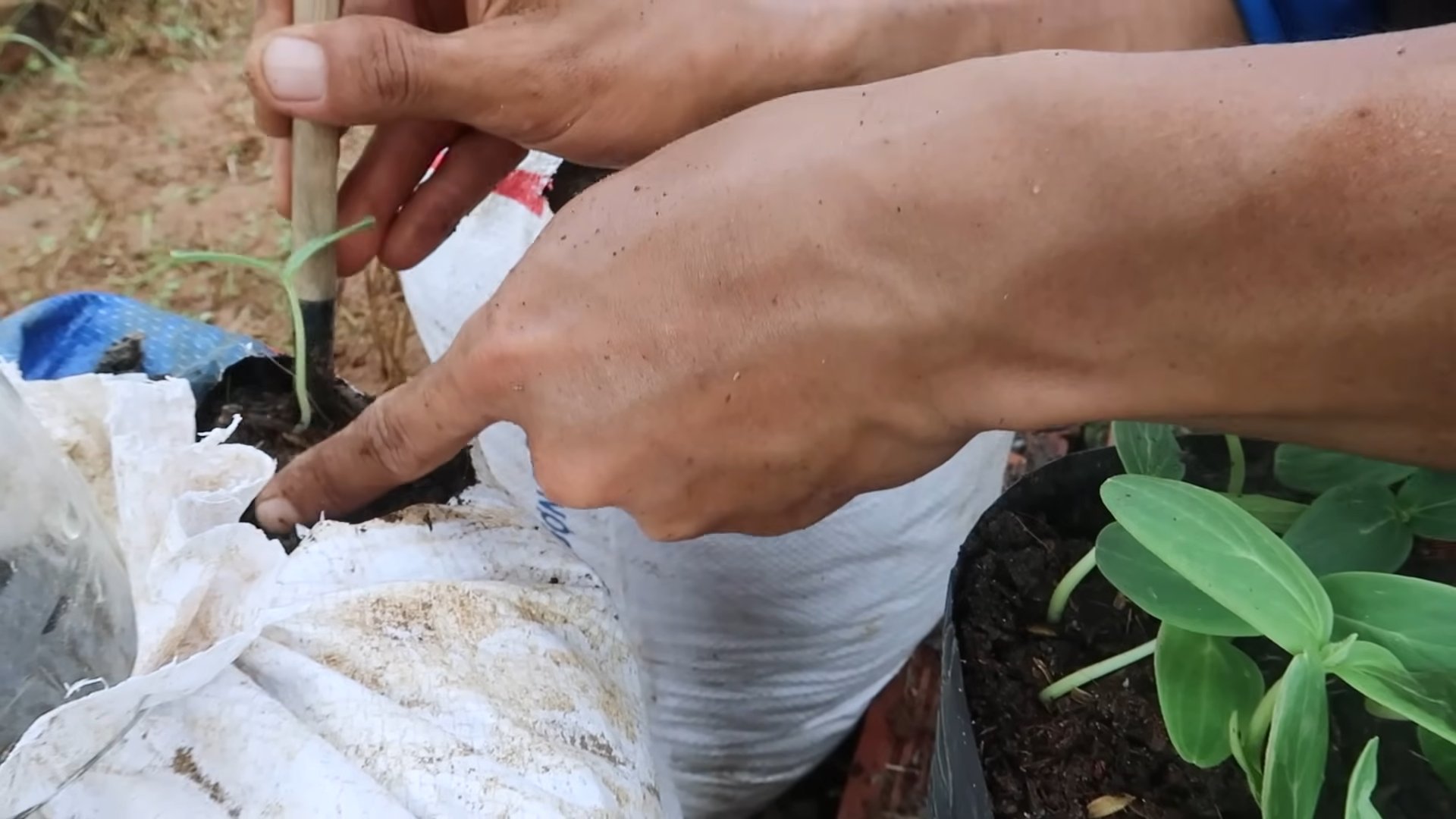
Conclusion
So, there you have it! Growing cucumbers in a small space doesn’t have to be a pipe dream. With a little ingenuity and this simple DIY trick, you can transform even the tiniest balcony, patio, or windowsill into a thriving cucumber patch. We’ve shown you how to maximize vertical space, choose the right varieties, and provide the essential support these climbing plants need to flourish.
Why is this DIY approach a must-try? Because it’s not just about growing cucumbers; it’s about reclaiming your space, connecting with nature, and enjoying the unparalleled satisfaction of harvesting your own fresh produce. Store-bought cucumbers simply can’t compare to the crisp, flavorful burst of a cucumber you’ve nurtured from seed to salad. Plus, think of the environmental benefits – reducing your carbon footprint by growing locally and minimizing plastic packaging.
But the best part? This method is incredibly adaptable. Feel free to experiment with different container sizes and materials. Upcycle old buckets, repurpose plastic crates, or even create a stunning vertical garden using repurposed pallets. For variations, consider companion planting. Basil, marigolds, and nasturtiums are excellent choices for deterring pests and attracting beneficial insects to your cucumber plants. You could also try different trellising methods. Instead of a traditional trellis, use netting, string, or even repurposed tomato cages to support your growing vines. If you’re feeling adventurous, explore different cucumber varieties. Bush varieties are naturally more compact, while vining varieties offer a wider range of flavors and textures. Lemon cucumbers, Armenian cucumbers, and even pickling cucumbers can all thrive in a small space with the right care.
Don’t be intimidated if you’re a beginner gardener. This DIY trick is designed to be accessible and rewarding for everyone, regardless of experience. The key is to start small, be patient, and observe your plants closely. Pay attention to their watering needs, provide adequate sunlight, and address any pest or disease issues promptly.
We are confident that with a little effort, you’ll be enjoying a bountiful harvest of delicious, homegrown cucumbers in no time. So, grab your seeds, gather your materials, and get ready to embark on your small-space cucumber growing adventure!
We’re eager to hear about your experiences! Share your photos, tips, and challenges in the comments below. Let’s create a community of small-space cucumber growers and inspire others to embrace the joy of homegrown goodness. What are you waiting for? It’s time to get growing and discover the magic of small space cucumber growing!
Frequently Asked Questions (FAQ)
What are the best cucumber varieties for small spaces?
Choosing the right cucumber variety is crucial for success in small-space gardening. Bush varieties, such as ‘Spacemaster,’ ‘Bush Champion,’ and ‘Salad Bush,’ are naturally compact and well-suited for containers. These varieties produce shorter vines and require less trellising. Vining varieties, while requiring more support, can also be grown in small spaces with proper trellising. Consider varieties like ‘Patio Snacker,’ ‘Little Leaf,’ or even smaller pickling varieties. Look for varieties labeled as “compact” or “bush” for the best results. Remember to check the seed packet for specific information on plant size and spacing requirements.
How much sunlight do cucumbers need?
Cucumbers are sun-loving plants and require at least 6-8 hours of direct sunlight per day to thrive. Insufficient sunlight can lead to stunted growth, reduced fruit production, and increased susceptibility to diseases. If you don’t have a sunny spot, consider using grow lights to supplement natural sunlight. Position your cucumber plants in the sunniest location available, and rotate the containers regularly to ensure even exposure to sunlight.
What type of soil is best for growing cucumbers in containers?
Cucumbers need well-draining soil that is rich in organic matter. A good potting mix specifically formulated for vegetables is ideal. Avoid using garden soil, as it can be too heavy and compact in containers, hindering drainage and root growth. Amend your potting mix with compost or aged manure to improve fertility and water retention. The ideal soil pH for cucumbers is between 6.0 and 7.0.
How often should I water my cucumber plants?
Cucumbers are thirsty plants and require consistent watering, especially during hot weather. Water deeply whenever the top inch of soil feels dry to the touch. Avoid overwatering, as this can lead to root rot. Container-grown cucumbers tend to dry out more quickly than those grown in the ground, so check the soil moisture regularly. Consider using a self-watering container or adding mulch to the soil surface to help retain moisture.
What kind of fertilizer should I use for my cucumber plants?
Cucumbers are heavy feeders and benefit from regular fertilization. Use a balanced fertilizer with equal parts nitrogen, phosphorus, and potassium (e.g., 10-10-10) or a fertilizer specifically formulated for vegetables. Apply fertilizer according to the package instructions, typically every 2-3 weeks. You can also supplement with organic fertilizers like compost tea or fish emulsion. Avoid over-fertilizing, as this can lead to excessive foliage growth at the expense of fruit production.
How do I trellis my cucumber plants in a small space?
Trellising is essential for growing vining cucumbers in small spaces. It maximizes vertical space, improves air circulation, and makes harvesting easier. There are several trellising options to choose from, depending on your space and preferences. A simple trellis made from bamboo stakes or wooden dowels is a good option for small containers. You can also use netting, string, or repurposed tomato cages to support your cucumber vines. Attach the trellis securely to the container and train the vines to climb up the support structure.
How do I deal with pests and diseases on my cucumber plants?
Cucumbers are susceptible to various pests and diseases, including aphids, cucumber beetles, squash bugs, powdery mildew, and downy mildew. Regularly inspect your plants for signs of infestation or disease. Handpick pests or use insecticidal soap to control infestations. Improve air circulation and avoid overhead watering to prevent fungal diseases. If necessary, use a fungicide specifically labeled for cucumbers. Companion planting with basil, marigolds, or nasturtiums can also help deter pests.
When should I harvest my cucumbers?
Cucumbers are typically ready to harvest 50-70 days after planting, depending on the variety. Harvest cucumbers when they are the desired size and color. Overripe cucumbers can become bitter and seedy. Use a sharp knife or pruning shears to cut the cucumber from the vine, leaving a short stem attached. Harvest regularly to encourage continued fruit production.
Can I grow cucumbers indoors?
Yes, you can grow cucumbers indoors, but it requires providing adequate light and pollination. Use grow lights to supplement natural sunlight and ensure your plants receive at least 6-8 hours of light per day. You will also need to hand-pollinate the flowers, as there are no bees or other pollinators indoors. Use a small paintbrush to transfer pollen from the male flowers to the female flowers. Female flowers have a small cucumber-like structure behind the flower, while male flowers do not.
What if my cucumber plant is producing flowers but no fruit?
This is a common problem that can be caused by several factors, including insufficient pollination, lack of nutrients, or stress from temperature fluctuations or inconsistent watering. Ensure your plants are receiving adequate sunlight and nutrients. Hand-pollinate the flowers if necessary. Provide consistent watering and protect your plants from extreme temperatures. If the problem persists, consider adding a blossom-set spray to encourage fruit production.

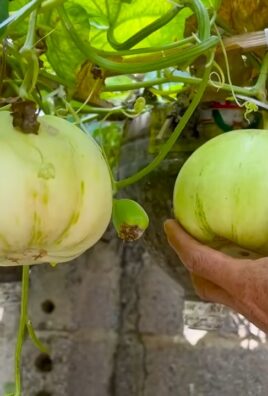
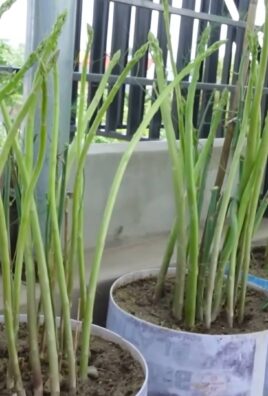
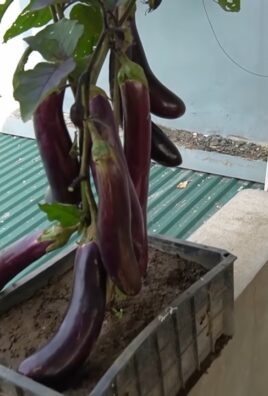
Leave a Comment